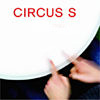 Jan Boerman
Jan Boerman
Since 1959 Boerman has build up a vast body of work featuring electronic compositions of unique quality and unparalleled international stature. He integrates concrete acoustic sounds with devised synthesised sounds within a composition to create 'music spaces' that take the listener into the unexplored areas between 'tone and noise'.
In the 1960's Boerman developed a unique method of composition which featured concepts of timbre-movement and tone length proportion that are remarkable. During endless experimentation in the studio, Boerman, like a true alchemist, transformed 'dead' tones into 'live' sounds. From this untamed world of sound, he brought forth works of great dramatic power through his mastery of the Golden Section. Since the 1970's he has integrated live electronic music with instrumental and vocal music. Jan Boerman has also composed theatre and ballet music, 'music for the listening museum' and, in collaboration with architect Jan Hoogstad, 'music as architectonic space'.
Since 1974, as Professor of Electronic Composition at the Royal Conservatory in The Hague, he has assisted many young composers in finding their way forward. Boerman has received the Matthijs Vermeulen Prize for his entire body of work and the WIllem Pijper Prize for his composition Vocalise 1994. The complete tapemusic of Jan Boerman won the Edison 1999 award for Dutch recorded music. See for more information: the NEAR Composer's Voice cd's.
BIOGRAPHY
Jan Boerman was born in The Hague on June 30, 1923.
Musical education
He studied at the Royal Conservatory of Music in his home town, with Léon Orthel (piano) and, from 1945, with Hendrik Andriessen (composition).
Activities
From 1956 onwards, Jan Boerman worked in the electronic studios of Delft Polytechnic, Utrecht State University and of The Hague Royal Conservatory of Music, where he has also taught electronic composition (after 1974) and piano.
Compositions
Boerman has composed a number of orchestral and chamber music works; the main part of his oeuvre, however, consists of electronic music. He has been one of the few composers who persisted in composing for tape. It wasn't until 1976 that Boerman ventured to include "live" sounds in his work: the result was Vocalise - Voorstudie (Preparatory study for a Vocalise). It was followed by an "orthodox" tape: Kompositie 1979. For the ensemble Het Nieuwe Leven he composed Weerstand (Resistance, 1982) for tape and percussion, and later Ontketening (Unchainment, 1983) for tape and metal instruments. Boerman has also written electronic ballet music, including De touwen van de tijd (The ropes of time) and Monument voor een gestorven jongen (Monument for a dead boy). Muziek voor slagwerk en orkest (Music for percussion and orchestra, 1991) was performed during the Holland Festival of 1991.
Prizes
In 1982 Jan Boerman was awarded the Matthijs Vermeulen Prize for his entire oeuvre. In 1997 he was awarded the Willem Pijper Prize for his Vocalise. In 1999, Jan Boerman got the Edison award for Dutch recorded music for The complete tape music of Jan Boerman (CV-NEAR 04/05/06/07/08). See for more information: the NEAR Composer's Voice cd's.
Compact Discs
His complete tape music appeared in 1998 on CD (CV-NEAR 04/05/06/07/08). This CD-box won the Edison 1999 award for Dutch recorded music. See for more information: the NEAR Composer's Voice cd's. On NM 92052 appeared: Vlechtwerk, Kompositie 1989 and Tellurisch.
COMPOSITIONS
- no date Adagio, for orchestra no date Scherzo, for orchestra
- no date Symfonisch rondo, for orchestra
- no date Muziek tegen 2 dansers, balletmusic for piano
- 1950 4 Stukken voor piano (Four Pieces for Piano) 30'
- 1955 Kleine toccate, for piano (published by Alsbach, Amsterdam)
- 1956 Prelude, Rondo, Fantasia, Finale, for 2 piano's* 30'
- 1959 Musique concrète, electronic music
- 1960 Alliage, electronic music 10'
- 1960 Rhinoceros (text: Ionesco), electronic
theatermusic
1961 Etude sonore, electronic music - 1961 Alchemie 1961, electronic music 13'
- 1963 Illusie, balletmusic
- 1964 Een groot dood dier (text: B. Schierbeek), electronic theatermusic
- 1964 De bouwers van het rijk (text: B. Vian), electronic theatermusic
- 1965 Monument voor een gestorven jongen, electronic balletmusic
- 1965 De zee I, electronic music* 26'
- 1966 De zee II, electronic music* 18'
- 1968 Zonnesteen (tekst: O. Paz), for speaking voice and electronic music* 35'
- 1970 The ropes of time, electronic balletmusic
- 1970 Negen varianten, electronic music
- 1970 Kompositie voor twee piano's, for two piano's
- 1972 Kompositie 1972, electronic music* 13'
- 1974 Kompositie 1974, electronic music 12'
- 1976 Vocalise-voorstudie, electronic music
- 1979 Kompositie 1979, electronic music* 18'
- 1980 3 Stukken voor 2 piano's 45'
- 1981 Weerstand, music for el. guitar and tapes* 22'
- 1983 Ontketening I, for 3 aluminium plates and tapes 28'
- 1984 Ontketening II, for percussion, electronics and tape* 30'
- 1988 Maasproject, for brass, Fairlight computer-synthesizer and 16 track tape
- 1988 Vlechtwerk, electronic music* 13'
- 1989 Kompositie 1989, (het evenwicht), electronic music* 19'
- 1989 Die Vögel, for choir, brass quartet and 2 tapes* 40'
- 1990 Voor de Fabriek, electronic music
- 1991 Tellurisch, electronic music*32'
- 1991 Muziek voor slagwerk en orkest*, for percussion and orchestra 22'
- 1992 Cortège, for 2 pianos* 17'
- 1993 Scherzo, for 2 pianos* 15'
- 1993 Vocalise, electronic music 32'
- 1994 Vocalise 1994, electronic music*
- 1994 Fuga, for 2 piano's
- 1994 Maasproject (Klank-Kleur-Beweging), electronic music* 36'
- 1994 Kringloop I-II-III, electronic music* 40'
- 1995 Muziek voor het Maasproject I-II, electronic music*
- 1995 Kringloop I-II, electronic music*
- 1996 Introductie en fuga, for 2 piano's* 11'
- 1997 Ruïne, electronic music* 16'
The complete tapemusic of Jan Boerman is published on CD by NEAR / Donemus: CV-NEAR 04/05/06/07/08. See for more information: the NEAR Composer's Voice cd's.
* score published by Donemus, Amsterdam.
Further information:
http://www.near.nl/near/boermanalgnl.html
http://www.near.nl/near/boermanframe.html